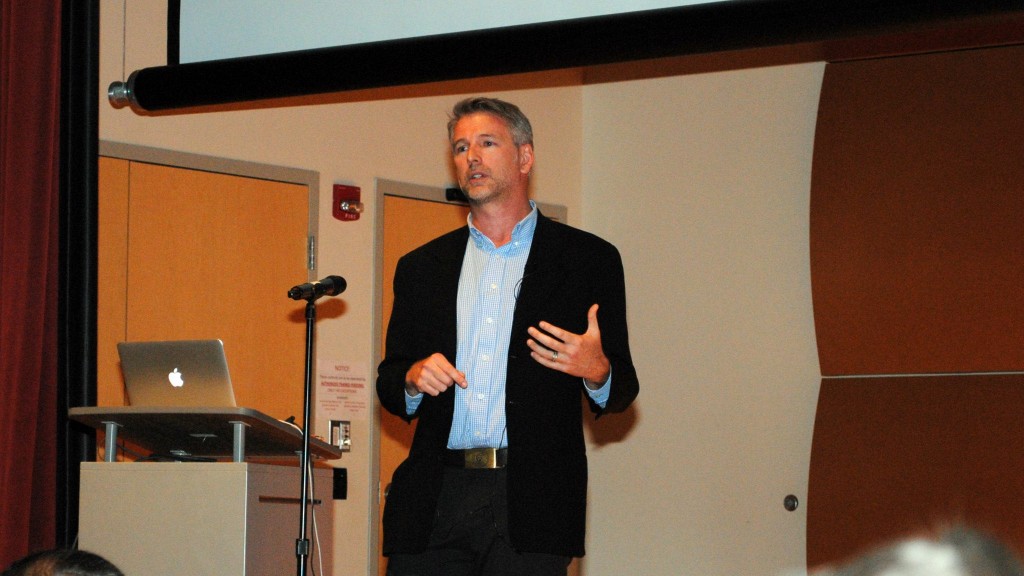Dr. Wallace J. Nichols
Dr. Wallace “J” Nichols came to fame when he tagged a sea turtle (affectionately called Adelita by his research team) with a GPS transponder and published her coordinates online as she made the long journey across the Pacific Ocean to Japan. Compared to Adelita’s journey, Nichols’ professional career has been anything but direct, but one constant for Nichols is his love of the outdoors; specifically, his love of water. Nichols became enthralled by nature at an early age, and he earned his PhD in Wildlife Ecology from the University of Arizona’s School of Renewable Natural Resources. Yet Nichols’ recent work has made him a pioneer in the green world, combining environmental activism with neuroscience in a field he calls “neuroconservation,” which explores the effect of nature on the human mind. Central to neuroconservation is Nichols’ belief that environmental activism would be most effective if people could draw connections between two great forces: the ocean and the human mind.
Nichols is a gripping speaker (see his TEDtalk here) and a New York Times best-selling author.
More about Dr. Wallace J Nichols:
- Research Associate at the California Academy of Sciences, where he collaborates with and advises graduate and undergraduate students in environmental studies and marine biology programs around the country.
- Crowdsources his work as an independent scientist through the LiVBLUE Angels initiative.
- Started the Blue Marbles Project, which encourages people to give an environmental activist or nature lover a blue marble as a token of thanks for “loving our little blue planet”.
- Co-founded Billion Baby Turtles, which supports sea turtle conservation efforts in Latin America by paying local workers to patrol beaches and protect endangered turtle nests.
Awards & Recognitions
- Recipient, University of Arizona’s 2014 Global Achievement Award
- Recipient, honorary doctorate in science, DePauw University (watch his 2010 commencement address here)
- Marshall Fellowship and Fulbright Fellowship from the University of Arizona’s School of Renewable Natural Resources
Books

